Posted on 4/11/2017
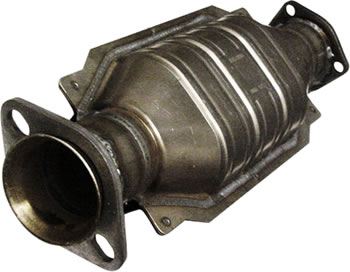
We all want to make sure we’re doing our part to reduce our impact on the environment. A big part of that is making sure your vehicle is in tip-top shape, minimizing harmful exhaust emissions. That’s why, in Maryland, we’re all required to have our vehicle’s emissions systems inspected every two years to make sure it’s functioning properly. A major portion of your emissions control system is the catalytic converter. It’s part of the exhaust system and contains a ceramic honeycomb called a substrate. That substrate has precious metals like platinum, palladium, rhodium and cerium embedded in it. Hot exhaust gasses pass through the substrate and the elements act as a catalyst, causing a chemical reaction in the gasses. That reaction changes the chemical makeup of the exhaust and results in cleaner emissions and, of course, a cleaner environment. Looking into ... read more
Posted on 3/28/2017
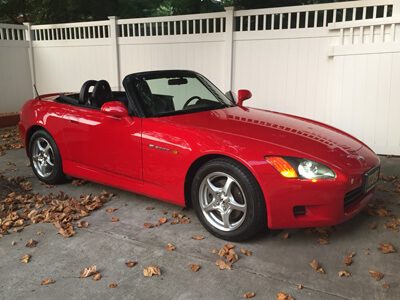
Keep your car looking like new… just like Greg’s S2000! We’ve talked before about how maintaining your car for the long haul makes great financial sense. But as your Honda, Acura, Toyota, Lexus or Scion ages, how do you keep it looking new? Just like the rest of your car, a little preventive maintenance goes a long way with your car’s paint. If you keep up with it, you can keep that “showroom shine” for years to come. Here are a few quick tips: Park your car under cover The number one “paint killer” is the sun. UV rays, over time, break down the protective coating on your car’s surface. They also cause your headlights to get cloudy. The best way to avoid this kind of damage is the park your car in a garage. Of course, not all of u ... read more
Posted on 3/14/2017
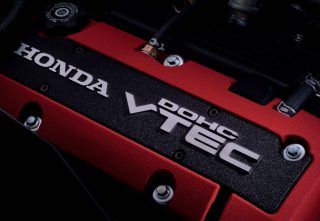
Here at Motor Works, we like to speak plain English with our clients. Acronyms can sometimes get in the way of clear communication, so we try to avoid them when we can. We get this question quite a bit… “What does VTEC mean?” The short answer is “Variable Valve Timing and Lift Electronic Control”. It’s a system Honda developed to increase performance and efficiency on its smaller engines. While Honda certainly led the way in developing this technology, other manufacturers have adopted similar systems over the years. I’ve you never pushed your VTEC-equipped Honda past about 5,000 RPM, you’ve probably never experienced what VTEC does for your car. Rather than trying to explain it ourselves, we’ll let CNET’s Brian Cooley show you…
Posted on 11/12/2015
Here at Motor Works, we always suggest a computerized all-wheel alignment when you get new tires. Not only does this extend the life of your new tires, it helps with vehicle stability, ride quality and fuel economy. We found this great video from CNET’s Brian Cooley explaining the basics of wheel alignment, including caster, camber and toe. Check it out
Posted on 6/8/2015

We never thought we’d see the day we needed to use an eye chart with our cars, but here we are. Standard on more and more of Honda’s newer model cars is their LaneWatch™ system, which uses a camera in the right side mirror to give you a look into your blindspot. Sometimes that system needs an “eye exam.” Specifically, when we replace the side mirror with the camera (or you manage to tinker around in the hidden diagnostic menus and wipe out the system by mistake) we need to re-aim the LaneWatch camera. Essentially it’s telling the camera what to look at and places the guidelines on the screen in the right locations. We accomplish that by setting up a specially-designed target about 15 feet (14.764 feet, to be exact) behind the front wheel and telling the system to take a picture. It then autom ... read more
Posted on 6/4/2015
There’s a very important part of your vehicle that most people don’t ever think about. It’s called the Differential and it allows your engine to drive wheels on opposite sides of the car at different speeds, allowing you to go around corners without destroying your tires or axles. The concept is exceedingly simple, and while it’s been enhanced quite a bit over the years, it’s not too different than what General Motors demonstrates in this video from 1937! Some engineering designs are pure art. Even if you’re not technically-inclined, this 8-or-so minute video puts it in layman’s terms and it’s fun to watch
Posted on 4/13/2015
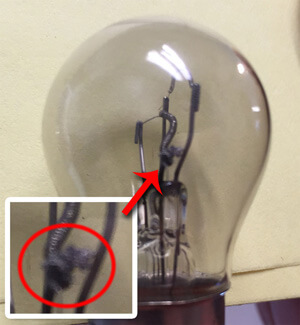
In this case, together isn’t better at all! So… we ran through our full suite of tests to determine the cause — thinking perhaps that it was the brake lamp switch (which is a little plunger-type switch attached to the brake pedal.) Then we discovered something odd: when we would turn the parking lights and headlights on, the brake lights would come on and the van would be able to shift again. So we continued running down the problem and discovered that it was a simple fix: the brake light bulbs have two filaments in each bulb — one for the parking lights and one for the brake lights. Like any other light bulb, they tend to get hot when on for long periods of time. Turns out all the stop-and-go driving in this van actually caused the two filaments to melt together, completing the circuit when the parking lights were on and shorting out the brake light circuit. Total repair ... read more
Posted on 11/24/2014
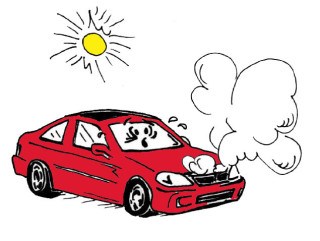
Here is another reason to have trained eyeballs under your car’s hood on a regular basis. This pseudo-aneurysm of the upper radiator hose could leave you stranded somewhere. When this blows…and it will, the anti-freeze coolant will leave the engine and the meltdown will begin.Overheating aluminium engine components is extremely hard on your bank account or credit card.Good news, though… Honda and Toyota hoses generally last beyond ten years. There may up to 10 or 12 specially molded hoses under your hood. If there is one leak here, another isn’t far away. We usually suggest replacement of all of the cooling system hoses at the same time in order to protect your entire investment. “Look out captain, she’s about to blow